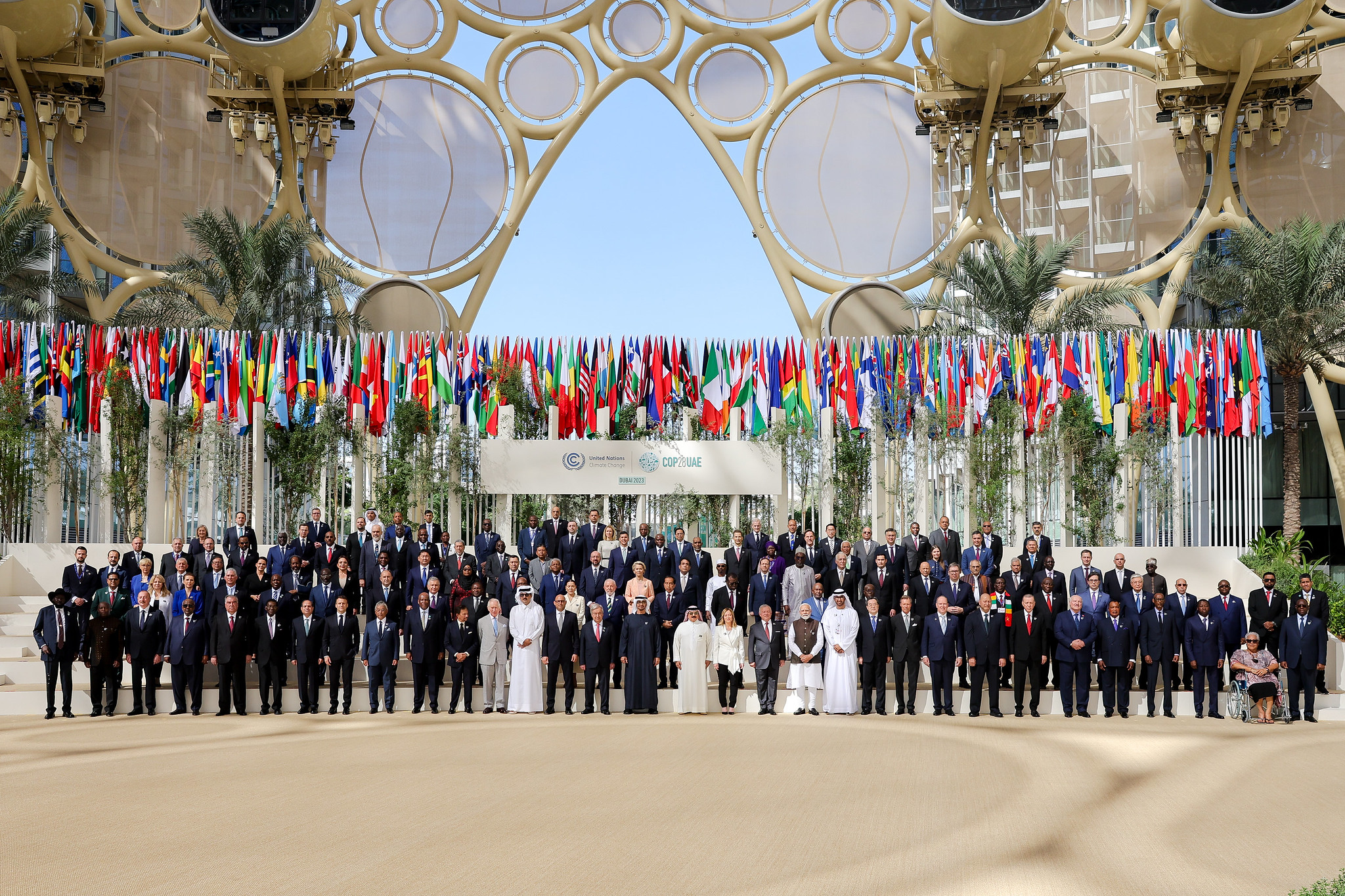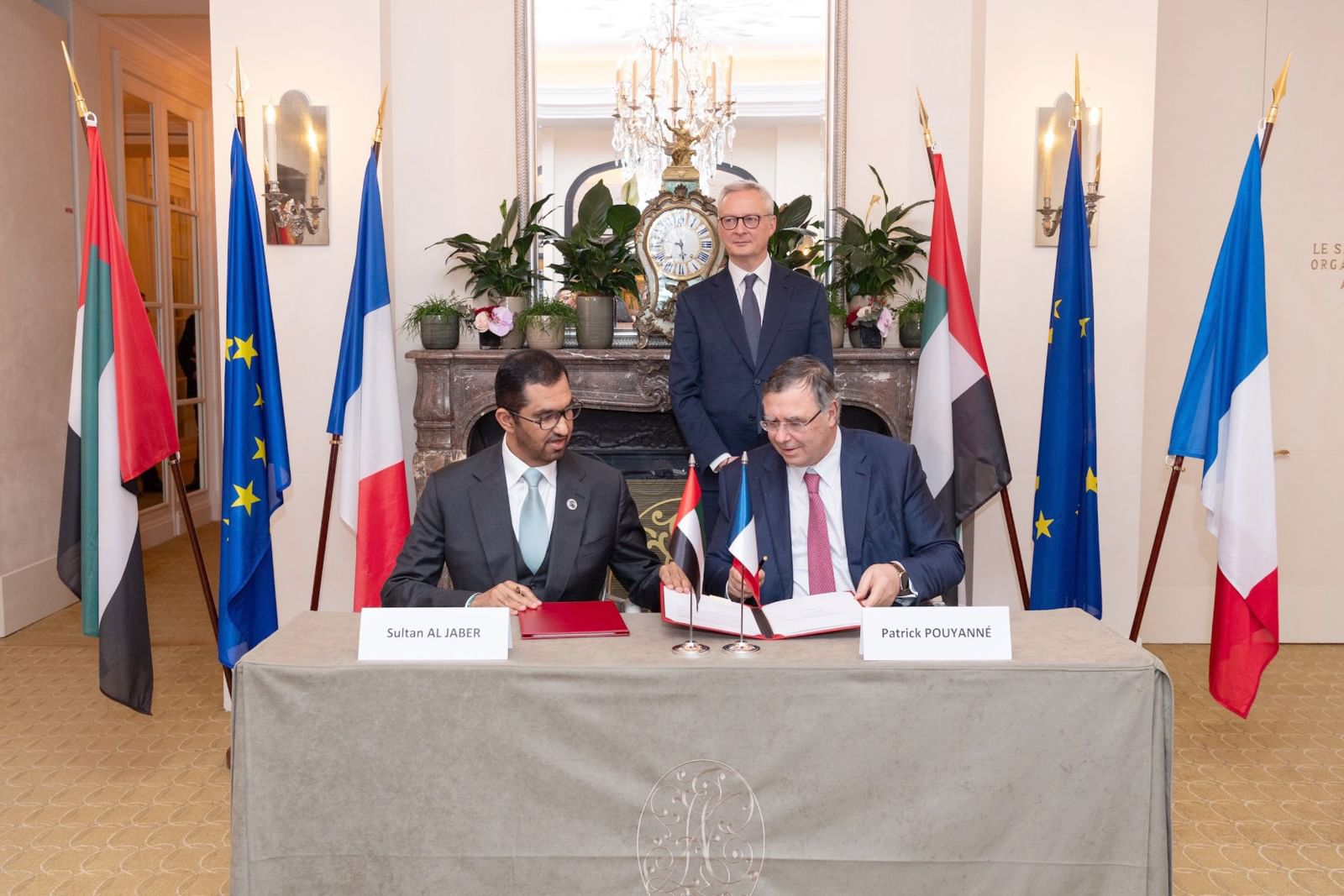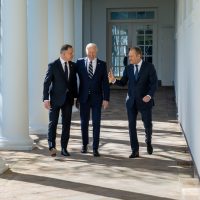Past years have seen an enormous, yet insufficient, rise in public debates over climate change and, consequently, investments in sustainable development worldwide. Even though sustainability-related conversations were developed and held predominantly in the geographic West, the eastern counterpart has recently shown a pulsing initiative to chip in. Middle Eastern fossil fuel hegemons are seen setting their own goals to mitigate climate change and are growingly being spotted investing heavily in renewable resource enterprises. What motivates this relative change of heart and how much of a change it really is? Will Middle Eastern society go green, or as the Arabic proverb “Deil Al Kalb Umruhu ma Ya’tadil” says: A dog’s tail can never straighten? A brief look at the sustainable energy reality of the United Arab Emirates (UAE), the Middle Eastern sustainable innovator, shall provide a decent answer.
Ever since the first commercial oil discovery in 1958, the Emirates economy has been heavily reliant on fossil fuels. To this day, the energy supply market continues to be dominated by natural gas (making up to 63% of the market) and oil (representing almost 30%). [1] Furthermore, crude oil makes up to 80% of the energy production market, representing almost 16% of the UAE’s GDP – one of the highest GDPs per capita in the world, and makes UAE the seventh largest liquid fuel producer in the world. [2] Over time, due to fossil fuels’ exhaustible nature seen in Dubai, the country’s GDP has been diversified numerous times, although remaining heavily reliant on the fossils coming predominantly from Abu Dhabi.
Bearing this fossil-dominated reality in mind, it did not, however, come as a shock that one of the richest Emirates, Dubai, hosted the 28th United Nations Climate Change Conference, COP28, in November 2023. The UAE was the first Middle Eastern nation to become a party to the Paris Agreement. The Agreement classifies participating countries into groups, primarily those historically responsible for greenhouse gas emissions (Annex I) and those without such a history (non-Annex I). The UAE falls into the latter. Despite its non-Annex I status, which exempts it from mandatory emissions reductions, the UAE has set several ambitious goals towards a sustainable transition. [3]
Emirates go green
Following the pattern set by the Western democracies, the UAE has embarked on reaching Net Zero (emissions) by 2050. [4] Such strategy includes reducing carbon emissions to a minimal level that can be naturally absorbed and permanently stored, as well as removed by other carbon dioxide removal methods, resulting in no remaining emissions in the atmosphere. Its concrete targets aligning with the Paris Agreement include limiting the rise in global temperature to 1.5 C compared to pre-industrial times and reduction of greenhouse gas emissions. Additionally, the strategy entails bolstering sustainable investments into renewable energy nation- and worldwide. To fulfil the set goal of Net Zero 2050, the UAE has claimed to undertake more than 25 programs in six major polluting sectors: industry, buildings, transport, power, waste, and agriculture. [5]
Furthermore, the Emirates has been heavily investing in sustainable cities and energy-related R&D domestically, predominantly through the flagship project Masdar. Masdar, Arabic for ‘source’, is a project consisting of four subprojects – Masdar Institute of Science and Technology, Masdar Capital, Masdar Clean Energy, and finally, Masdar City. All Masdar divisions set off to make Abu Dhabi a “preeminent source of renewable energy knowledge, development and implementation” and become a competition to California’s Silicon Valley. [6]
The city’s ownership lies in the hands of Dubai’s very own Mubadala Investment Company. The company’s portfolio ranges from a number of real estate and infrastructure companies in China, through a pharma business in France and a crypto trading platform in the UAE, to a raw materials digital trading platform in Switzerland. It is, therefore, fair to say Mubadala Investment Company is a fervent investor, not a fervent sustainable development activist. [7]
Besides being home to the International Renewable Energy Agency (IRENA), the city is thought to be the project on the UAE’s path towards Net Zero, a demonstration of a sustainable urban community and proof that “sustainability is not a choice, but a way of life.” [8] Nearly all materials used to construct Masdar City are recycled and thus sustainable. However, the effectiveness of Masdar City, along with its younger brother, The Sustainable City in Dubai, has been questioned. The delay in their construction and relative isolation from the major cities raise questions about their purpose.

Additionally, UAE’s investment portfolio has been visibly diversified towards developing a more sustainable nature. On the one hand, significant capital was poured into the nuclear, solar, and hydrogen sectors domestically. Establishing the Emirates Nuclear Energy Company (ENEC) in 2009 and opening the first nuclear unit in Barakah in 2021, the UAE has set off on a journey of nuclear production. Thanks to this, nuclear electricity accounted for 7% of the whole generation mix in 2021. [9] As the UAE’s geographic location supplies it with abundant sunshine, assertion into the solar energy market was inevitable. Ever since, the Emirates has profitably installed numerous domestic solar power plants, including the world’s largest single-site solar power plant – Al Dhafra Solar PV. [10] In contrast to days of sunshine, the Emirates’ location does not suggest fertile soil for wind energy. Despite the low winds, Masdar launched a domestic Wind Program in 2023, supposedly providing enough energy to power approximately 23,000 homes, making up approximately 10% of the total number of households. [11] [12] As Jules Verne predicted many years ago, “water will one day be employed as fuel, that hydrogen and oxygen which constitute it, used singly or together, will furnish an inexhaustible source of heat and light, of an intensity of which coal is not capable.” [13] Two hundred years later, the world’s sustainable movement also emphasizes the significance of low-carbon, or zero-carbon, hydrogen. The UAE’s National Hydrogen Strategy of 2023 set off to develop and implement low-carbon hydrogen alike whilst playing “a leading role in the global hydrogen economy.” [14]
Sustainable partnerships
Emirates has been showcasing its interest in international cooperation through sustainable investments and joint ventures abroad. According to a Financial Times analysis, the UAE is expected to invest almost $200 billion in renewable energy worldwide. [15] Arguably, their energy-related partnerships ranging from the East to the West represent a security web and entail their growing sphere of influence.

Estimated two thirds of the UAE’s foreign renewable investments will target developed countries. The largest portion will be served to Turkey, with estimated $30 billion of Emirati capital. Such strategic interchange could be explained by the Emirati strive for a stable partnership with a regional military power, and strategic location at the crossroads between the East and West, that Turkey possesses. Surrounded by way larger potential adversaries that could easily eat the UAE up, establishing such secure partnership would serve as a strategic advantage. The second largest receiver of Emirati foreign renewable capital is the US. The tactical partnership the UAE formed with the US showcased in the airport pre-clearance and foreign investments signifies a move towards establishing a friendship with the world’s largest economy, a military superpower, and a vehemently proud democracy. By securing these two partnerships, the UAE establishes itself in the global and regional sphere as a friend of those developed, democratic, and strong.
Secondly, Emirati renewable investments have not been avoiding the Old Continent either. Following the Memorandum of Understanding with the major French government-owned electric utility company, EDF, on research and development in nuclear and hydrogen energy, the ENEC has been eyeing investments in European nuclear energy assets. [16] An Emirati investor has reportedly approached to invest in the Sizewell C nuclear power plant in Suffolk after removing Chinese-owned China General Nuclear Power Group from the project due to security concerns. [17] [18] Furthermore, the UAE was seen closing green hydrogen deals with partners ranging from Germany to Japan, solar energy contracts with Indonesia, and many others. [19] [20]
Emirati investment activity in Europe, therefore, showcases its interest to be a part of the developed countries‘ dialogues and, in some cases, to replace the „as old as fossils“ superpowers.
Additionally, the African continent has been among the primary destinations of Emirati renewable capital through the Africa50 initiative that set off to aid developing countries towards a sustainable transition. Arguably, such initiatives extend the web of Emirati influence and transform their geopolitically vulnerable position into a source of influence. [21]
Yet fossils still prevail…

The Emirati domestic and foreign investments undeniably show a great interest in playing an active role in the post-fossil world. However, the Emirates also understands that the present reality is still fossil-fuelled. Because of the large global oil and gas demand and inarguably enormous fossil reserves in the UAE’s possession, the country continues to pump out as much as it can. This fact alone would not come across as a surprise – the fossil fuels are exhaustible, and the demand grows; thus, a country continues to export while actively trying to switch to green energy. In the case of the UAE, it is not that simple. Months before hosting the COP28, which was to hold clean energy-related talks, the government-owned ADNOC (Abu Dhabi National Oil Company) introduced an ambitious $150 billion plan to „accelerate growth and strategy“ for oil and gas production. [22] Furthermore, ADNOC’s commitment to expanding is reflected in the acquirement of a 30% stake in Azerbaijan’s condensate gas field, a 50% ownership gas deal with Israel worth $2 billion, [I] planned 10% stake in a gas project in Mozambique and many others. [23] [24] [25] Additionally, $17 billion have been allocated to the progress of the Hail and Ghasha offshore gas fields. [II] Once constructed, the Ghasha concession will be producing over 1.5 billion cubic feet of gas per day by 2030. ADNOC claims the project has the potential to become a flagship in carbon capture and low-carbon production. Such framing helps the UAE build an image of a sustainable partner, but in reality, it fails to reflect on the fact that such production remains a significant emitter despite its low-carbon polishing. [26] ADNOC further argued that the project serves as a job creator that will „responsibly unlock its gas resources to enable gas self-sufficiency for the UAE, grow export capacity and support global energy security.“ [27] While this may be true, the question of effectiveness and the real motivation behind green energy projects arises. In a world of accelerated climate warming, two major ongoing regional wars and exposed energy security, are the fossils really the most responsible bet? As a result of the ambivalent energy objectives, according to an independent scientific project Climate Action Tracker (CAT), the UAE will not achieve the set goals due to its heavy fossil dependence and further investments in hydrocarbons it has been making. [28]
When confronted with the question of the contrasting national energy interest, COP28’s chair Sultan Al Jaber, who also happened to be the ADNOC CEO, responded there was no scientific evidence on fossils‘ impact on the climate. Furthermore, when opposed by Mary Robinson, former UN special envoy for climate change, he blamed her for trusting biased media.
Al Jaber’s contrasting professional life best reflects the energy persona of the UAE. While he holds office as president of Masdar, is the UAE Special Envoy for Climate Change, and chaired the COP28, he is also a Minister of Industry and Advanced Technology and CEO of a major UAE oil company, ADNOC. He talks about the need for joint action against climate change yet denies fossils‘ role in the crises and reportedly uses COP28 to promote the UAE’s oil and gas increase strategy. [29] [30]
What motivates the sustainable course then?
While MIT Technology Review analysis shows that less than 4% of the Emirati domestic supply market consists of renewable sources, the Emirati foreign and domestic investments display an initiative to take part in the global energy transition. [31] This initiative, although significant, remains undermined by continuous, or rather enhanced, fossil-related investments.
On the one hand, the UAE invests both financial capital and its image into sustainable progress at home and abroad. Over the past years, it has made significant financial contributions to sustainable energy solutions development. Such actions, undisputably, make the UAE a recognized partner in the developed world and a friend in need in developing countries. This way, it secures a spot at the changing international table of the global energy powers.
On the other hand, despite the ongoing sustainable efforts showcased in domestic and foreign policy, the UAE keeps pouring capital into its hydrocarbon assets. While such actions are expected of an oil-rich country in a fossil-dominated world, they significantly undermine the UAE’s forerunner role in fighting the climate crisis and make the world question its motives.
Because of this reality, it is fair to assess the Emirati renewable energy interests lie not in ideology but in political and economic pragmatism. As its international role as a fossil superpower is threatened by renewable transition, it has decided to become a part of the change to secure not only the flow of future capital but also a place at the international table. This way, the UAE secures its spot as a traditional fossil fuel leader and a clean energy pioneer.
Thanks to its active participation in the clean transition and initiative to engage in global energy diversification, we may expect to encounter the UAE more and more in our lives. Whether in the fossil scenario or, contrastingly, in the post-fossil world.
Article reviewed by Michaela Mildorfová and Martin Machorek
[I] The deal was postponed due to the ongoing war in Gaza.
[II] Two major contracts were terminated by ADNOC. As a result, the project will be further delayed.
Sources
[1] International Energy Agency. (n.d.). United Arab Emirates – Countries & Regions. Retrieved from https://www.iea.org/countries/united-arab-emirates/energy-mix.
[2] U.S. Energy Information Administration. (2024). United Arab Emirates invests to meet 2027 crude oil production capacity goal. Retrieved from https://www.eia.gov/todayinenergy/detail.php?id=61365.
[3] | UAE Embassy in Washington, DC. (n.d.). International Engagement. Retrieved from https://www.uae-embassy.org/discover-uae/climate-and-energy/international-engagement.
[4] The official portal of the UAE Government. (2021) The UAE’s Net Zero 2050 Strategy. Retrieved from https://u.ae/en/about-the-uae/strategies-initiatives-and-awards/strategies-plans-and-visions/environment-and-energy/the-uae-net-zero-2050-strategy.
[5] Ram A. (2023). UAE’s 2050 net-zero target pegged on lower emissions, mainly from industry. S&P Global. Retrieved from https://www.spglobal.com/commodityinsights/en/market-insights/latest-news/energy-transition/111723-uaes-2050-net-zero-target-pegged-on-lower-emissions-mainly-from-industry.
[6] Shahan, Z. (2013). Masdar — manufactured Silicon Valley of cleantech? CleanTechnica. Retrieved from https://cleantechnica.com.
[7] Mubadala. (n.d.). Our portfolio. Retrieved from https://www.mubadala.com/en/what-we-do/our-portfolio.
[8] Masdar. (n.d.). About Masdar City. Retrieved from https://masdarcity.ae/about-masdar.
[9] Nuclear power in the United Arab Emirates. World Nuclear Association. (n.d.). Retrieved from https://world-nuclear.org/information-library/country-profiles/countries-t-z/united-arab-emirates.
[10] Largest solar power stations in UAE. List Solar. (2021). Retrieved from https://list.solar/plants/largest-plants/united-arab-emirate/.
[11] Masdar. (2023). UAE Wind Program. Retrieved from https://masdar.ae/en/renewables/our-projects/uae-wind-program.
[12] Patel, S. (2023). UAE launches 104-MW wind project despite low winds. Power Mag. Retrieved from https://www.powermag.com/uae-launches-104-mw-wind-project-despite-low-winds/.
[13] Verne, J. (2010). The Mysterious Island. London, UK: The Floating Press.
[14] The official portal of the UAE Government. (2023). National Hydrogen Strategy. Retrieved from https://u.ae/en/about-the-uae/strategies-initiatives-and-awards/strategies-plans-and-visions/environment-and-energy/national-hydrogen-strategy.
[15] Mooney, A., & Williams, A. (2023). The cheque book COP: UAE’s $200bn bid for climate influence. Financial Times. Retrieved from https://www.ft.com/content/36a2f00d-eb7a-4057-bc31-6be6c4f01d16.
[16] Sadaqat, R. (2021). ENEC and EDF to sign MOU on Research and Development. Khaleej Times. Retrieved from https://www.khaleejtimes.com/local-business/enec-and-edf-to-sign-mou-on-research-and-development.
[17] Lawson, A. (2023, November 27). UAE approached to invest in Sizewell C nuclear power plant. The Guardian. Retrieved from https://www.theguardian.com.
[18] Grylls, G., & Ralph, A. (2023, November 27). Sizewell C stake seized from China may go to UAE. The Times. Retrieved from https://www.thetimes.co.uk/article/uae-state-energy-company-china-stake-sizewell-c-q7vk8jbtd.
[19] Welle, D. (2022, October 21). Germany receives first hydrogen shipment from UAE. dw.com. Retrieved from https://www.dw.com/en/germany-receives-first-hydrogen-shipment-from-uae/a-63524001.
[20] Arab News. (2022). UAE’s Masdar launches its first foreign investment-based solar plant in Azerbaijan. Arab News. Retrieved from https://www.arabnews.com/node/2043601/business-economy.
[21] The Euro-Mediterranean Economists Association (EMEA). (2023). COP28 Build-Up: $200 billion from the UAE for global clean energy investments. EMEA. Retrieved from https://euromed-economists.org/cop28-build-up-200-billion-from-the-uae-for-global-clean-energy-investments.
[22] Tani, S. (2024). UAE Energy Group ADNOC to lift spending on decarbonisation projects. Financial Times. Retrieved from https://www.ft.com/content/0abc5980-d4f9-4ea8-842a-81b1f2502b94
[23] El Dahan, M., Bousso, R., & Hernandez, A. (2023). Abu Dhabi’s ADNOC to acquire 30% stake in Absheron Gas Field. Reuters. Retrieved from https://www.reuters.com/markets/deals/abu-dhabis-adnoc-acquire-30-stake-absheron-gas-field-2023-08-04/.
[24] Ziady, H. (2024). BP and UAE suspend $2 billion gas deal in Israel as Gaza war drags on. Retrieved from https://edition.cnn.com/2024/03/13/business/bp-abu-dhabi-newmed-energy/index.html.
[25] El Dahan, M., Saba, Y., & Bousso, R. (2023). Abu Dhabi’s oil champion ADNOC bets on global expansion. Reuters. Retrieved from https://www.reuters.com/markets/commodities/abu-dhabis-oil-champion-adnoc-bets-global-expansion-2023-10-09/.
[26] World Oil. (2023). ADNOC awards $17 billion in contracts to develop offshore natural gas fields with zero CO2 emissions. World Oil. Retrieved from https://worldoil.com/news/2023/10/5/adnoc-awards-17-billion-in-contracts-to-develop-offshore-natural-gas-fields-with-zero-co2-emissions/.
[27] Reters. (2023). UAE’s ADNOC awards $17 billion of contracts for gas project. Reuters. Retrieved from https://www.reuters.com/sustainability/climate-energy/adnoc-awards-contracts-gas-project-aiming-net-zero-co2-emissions-2023-10-05/ .
[28] Climate Action Tracker. (2024). UAE. Retrieved from https://climateactiontracker.org/countries/uae/.
[29] European Commission. (2023). Press corner. Retrieved from https://ec.europa.eu/commission/presscorner/detail/en/statement_23_5722.
[30] Stockton, B. (2024). COP28 president secretly used climate summit role to push oil trade with foreign government officials. Centre for Climate Reporting. Retrieved from https://climate-reporting.org/cop28-president-oil-climate/.
[31] MIT Technology Review. (2023). The Green Future Index 2023. MIT Technology Review. Retrieved from https://www.technologyreview.com/2023/04/05/1070581/the-green-future-index-2023/.





